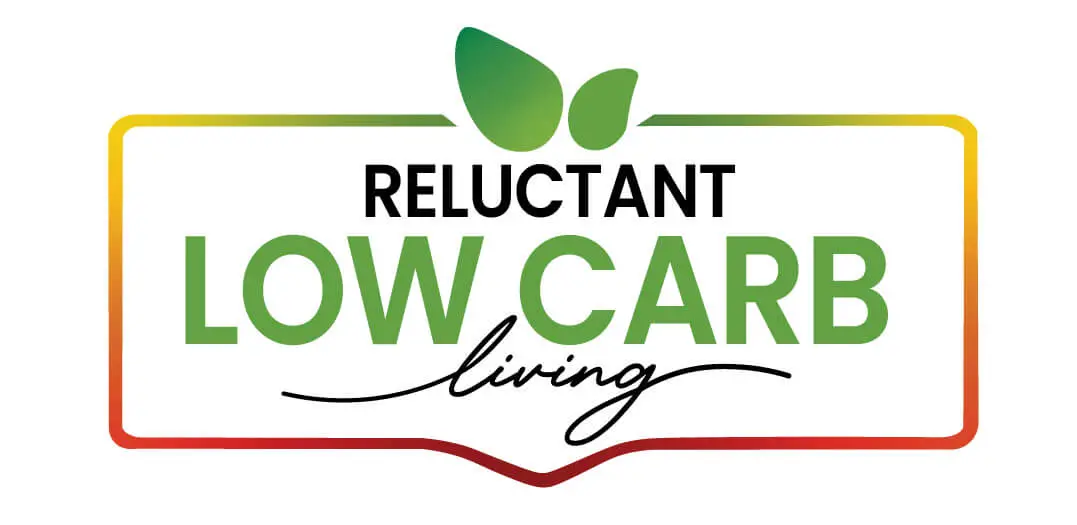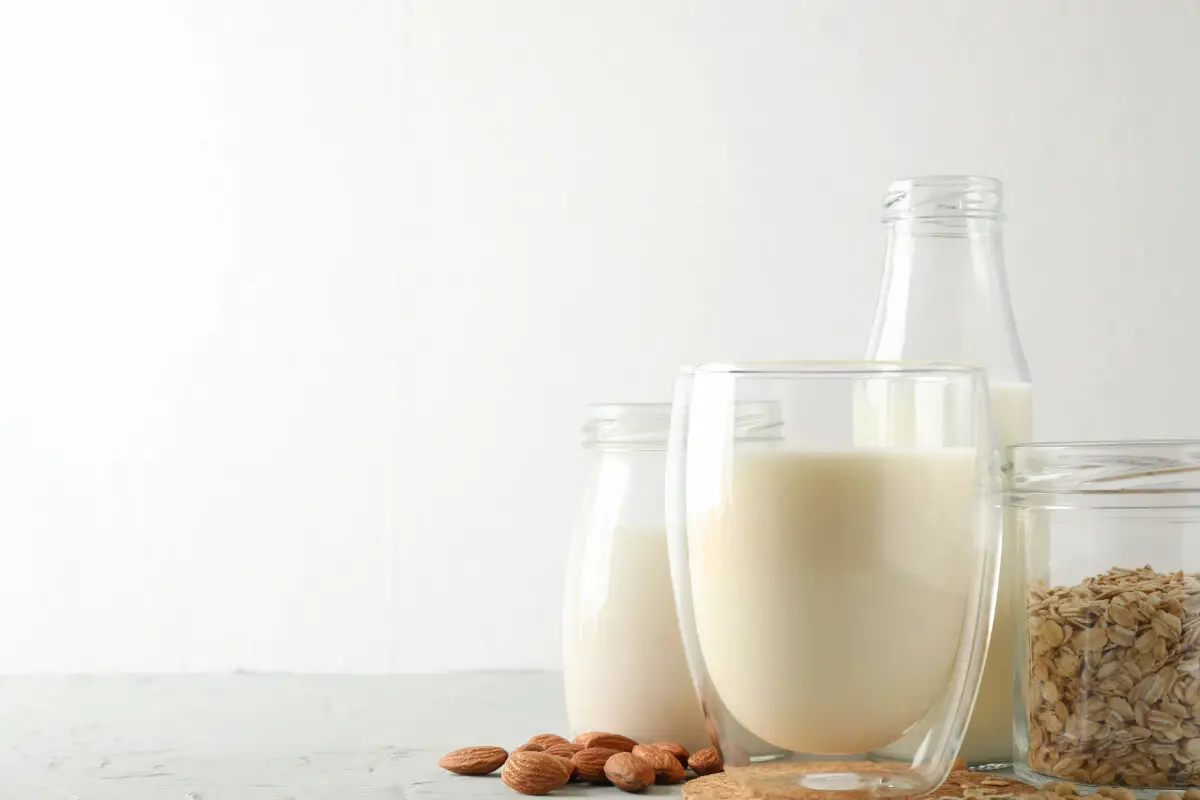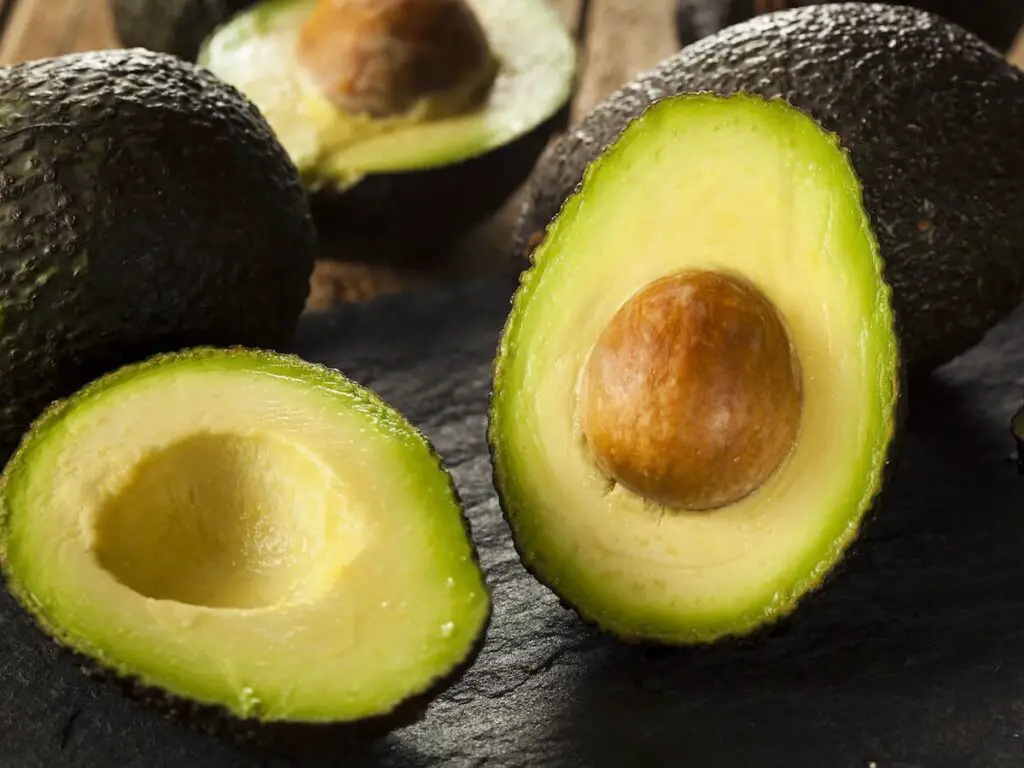Exploring the world of oat and almond milk opens up a conversation about popular dairy alternatives and their impact on our planet. This discussion is crucial for anyone looking to make choices that are kinder to the environment. By examining water usage, land use, effects on bee populations, and greenhouse gas emissions, we can gain insights into which option might be more sustainable.
Additionally, understanding their nutritional value and how they compare in taste and culinary uses helps tailor our diets to meet specific needs while considering environmental sustainability.
Table of Contents
Environmental Impact
When we talk about oat milk and almond milk, we’re diving into the world of popular dairy alternatives. Each has its unique footprint on our planet that’s worth exploring, especially for anyone trying to make environmentally conscious choices.
Starting with the amount of water used in production, almonds are known to be quite thirsty crops. Simply put, growing almonds needs water—about 130 pints just for a single glass of almond milk. This aspect highlights a significant concern, especially in regions like California, where most of the world’s almonds are grown and which often faces severe droughts.

Oat milk, on the other hand, is a friendlier neighbor when it comes to water use. Oats require significantly less water to grow than almonds. The manufacturing process of turning oats into milk is also viewed as more efficient and less resource-intensive.
Moving onto land use, growing oats is generally seen as more lenient on our landscapes. They can be grown in cooler, wetter climates where other crops might not survive, making them a sustainable option for many parts of the world.
Almonds, while providing habitats for bees during their blooming season, need more specific growing conditions, which often results in extensive land use dedicated solely to almond production.
Speaking of bees, the impact of almond farming on bee populations cannot be overlooked. Bees are rented and transported from all over the US each year to pollinate the almond crops in California.
This process has been tied to bee health issues, and population declines due to the stresses of travel, exposure to pesticides, and the monoculture environment of almond orchards.
Then, there’s the matter of greenhouse gas emissions. Producing oat milk typically results in lower emissions compared to almond milk. This is partly because oats can be grown in a broader array of environments, which reduces the need for transportation and the associated carbon footprint. In contrast, the concentration of almond farms in specific regions means that almonds and almond milk often travel long distances to reach consumers, adding to their carbon footprint.
In conclusion, from an environmental sustainability perspective, oat milk seems to have a few advantages over almond milk. It’s not perfect, of course – no agricultural product is entirely without impact.
However, regarding water usage, land use, effects on bee populations, and greenhouse gas emissions, oat milk appears to edge out almond milk as the greener choice. Remember, though, that sustainable consumption also involves considering various factors beyond environmental impact, including nutritional needs and personal health requirements.
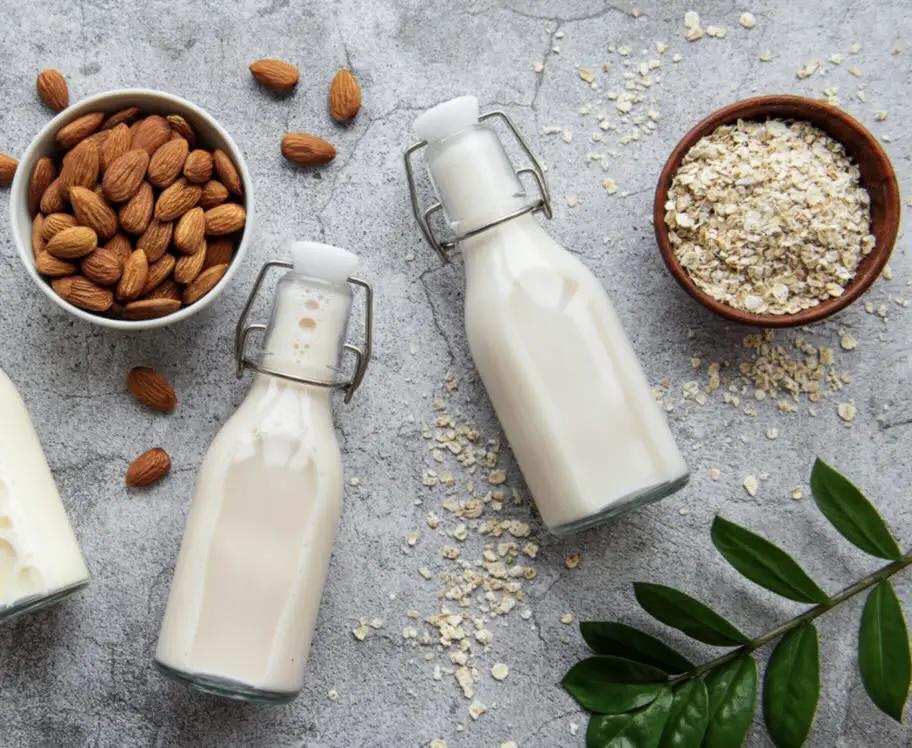
Nutritional Value
Nutritional Differences Between Oat Milk and Almond Milk
Switching gears from environmental impact to nutritional content, let’s explore how oat milk and almond milk stack up against each other in terms of what they bring to your daily diet.
People choose plant-based milk for various reasons, from combatting lactose intolerance to following a vegan lifestyle. Knowing what each milk offers can help tailor your diet to meet specific dietary needs.
Calorie Content and Macronutrients
Starting with calories, almond milk typically has fewer calories than oat milk. A cup of unsweetened almond milk averages around 30 to 50 calories, while the same serving of oat milk can contain about 120 calories. This makes almond milk a favorable option for someone closely monitoring calorie intake.
Proteins play a vital role in muscle repair and growth, so if you’re eyeing protein content, almond milk provides about 1 gram of protein per cup, whereas oat milk offers a slightly higher figure, around 3 grams per cup. Neither are protein powerhouses compared to cow’s milk, but they can contribute to daily protein intake, especially if incorporated into a balanced meal plan.
Regarding fats, almond milk carries more “healthy fats” and typically has less than 3 grams per serving, which could benefit heart health. Oat milk has slightly more fat than almond milk, but it’s important to note that the fats in oat milk are mostly unsaturated fats, considered a healthier fat option.
Carbohydrates are another consideration, especially for individuals monitoring their blood sugar levels. Oat milk is significantly higher in carbohydrates, with about 16 grams per cup, mainly because oats are a grain. In contrast, almond milk has less than 2 grams of carbohydrates per cup, making it a better option for low-carb or keto diets.
Micronutrients — Vitamins and Minerals
Turning our attention to micronutrients, almond, and oat milks are typically fortified with vitamins and minerals such as calcium, vitamin D, and sometimes vitamin B12—nutrients that are crucial for bone health, immune function, and energy levels.
However, almond milk naturally contains higher levels of vitamin E, an antioxidant that helps protect your cells from damage. Oat milk, on the other hand, can have more B vitamins naturally, which are key for converting food into energy.
Dietary Considerations
Almond milk may not be suitable for individuals with allergies due to nuts. Oat milk is a safe alternative, provided there’s no gluten sensitivity (oats are naturally gluten-free, but cross-contamination can occur during processing).
Both types of milk are suitable for vegan diets or those looking to avoid animal products entirely. However, it’s essential to consider the broader nutritional profile and how these milks complement the rest of your diet.
The choice between oat milk and almond milk hinges on personal health goals, dietary needs, and taste preferences. Whether it’s reducing calorie intake, managing carbohydrate intake for diabetes control, or ensuring you’re getting enough vitamins and minerals, these plant-based milks have unique advantages.
As always, checking the label for fortification and added sugars is key to choosing the healthiest option.
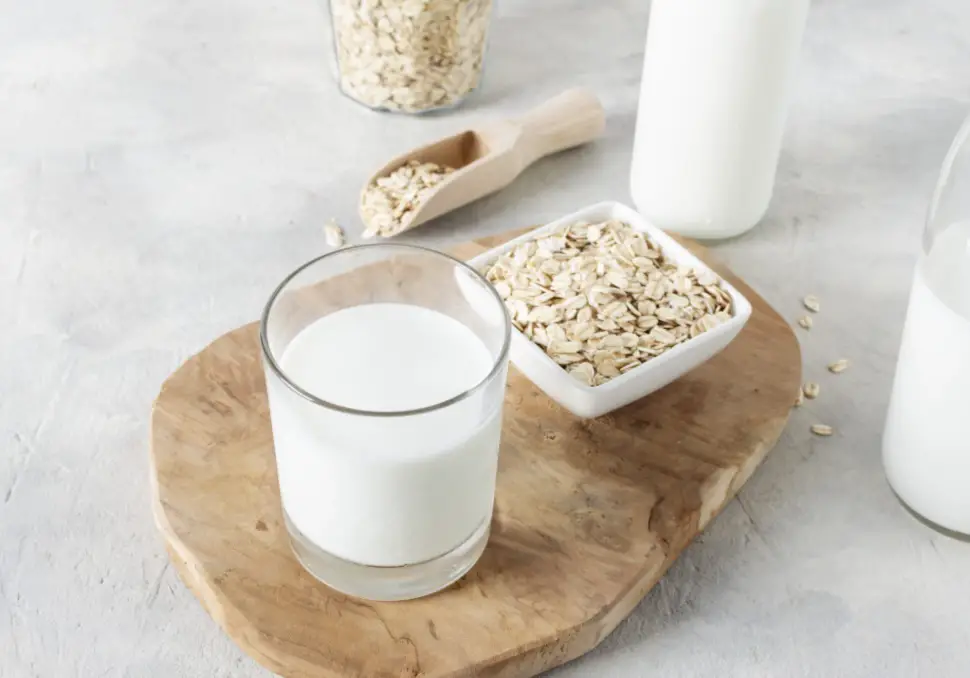
Taste and Culinary Uses
When substituting traditional cow’s milk with plant-based alternatives, taste and culinary versatility are often at the top of many consumers’ minds. This is especially true for oat and almond milk, two of the most popular non-dairy milks on the market.
Understanding how these options compare in flavor and their ability to be used in various culinary applications is crucial for making an informed decision that aligns with personal taste preferences and cooking needs.
Taste Comparison Between Oat Milk and Almond Milk
Oat milk is known for its naturally sweet and slightly creamy texture, which many find closely mimics the mouthfeel of full-fat dairy milk. This characteristic makes it a favorite for those looking to replicate the richness often sought in coffee, smoothies, or standalone drinking.
In contrast, almond milk typically has a lighter body and a distinctive nutty flavor that can vary in intensity depending on whether it’s homemade or a store-bought version. Some might find this nuttiness refreshing, while others may perceive it as less neutral than oat milk, potentially influencing its versatility in pairing with other foods and beverages.
Texture and Compatibility with Beverages
Due to its creaminess, oat milk blends exceptionally well into coffee and tea, providing a velvety consistency that’s particularly appealing in lattes and cappuccinos. It froths well, making it a top pick for baristas and at-home latte artists.
On the flip side, almond milk’s lighter texture doesn’t always blend seamlessly into hot beverages, sometimes separating or not frothing as well. However, it remains a stalwart companion to cold brews and iced teas, where its refreshing taste can really shine.
Culinary Use in Cooking and Baking
Both oat milk and almond milk can substitute for dairy milk in most recipes, from sweet to savory. However, their inherent flavors and textural profiles may slightly alter the final dish. Oat milk’s richness lends itself particularly well to creamy soups, sauces, and desserts like custard or pudding, where its density can be a direct substitute for whole milk without much compromise.
Almond milk, while equally versatile, might be better suited to recipes where its nutty essence complements the overall dish, such as almond-flavored baked goods or smoothies, where it blends harmoniously with other ingredients. Due to its lighter consistency, it might require some adjustments or thickening agents when used in recipes that rely on the higher fat content of dairy milk.
Despite their differences, both oat and almond milk can be successfully used in baking, with minimal impact on the rise and texture of cakes, bread, and other pastries, mainly if a recipe accommodates explicitly plant-based milk.
In conclusion, the choice between oat and almond milk ultimately boils down to individual preferences concerning taste and texture. Both options extend considerable culinary versatility across various applications—from beverages to sweet and savory dishes.
Experimentation with both types in various contexts is key to discovering their best uses and how well they align with one’s dietary preferences and cooking style. Whether you prefer the creamy sweetness of oat milk or the light nuttiness of almond milk, both offer a delightful way to diversify your diet while embracing plant-based alternatives.
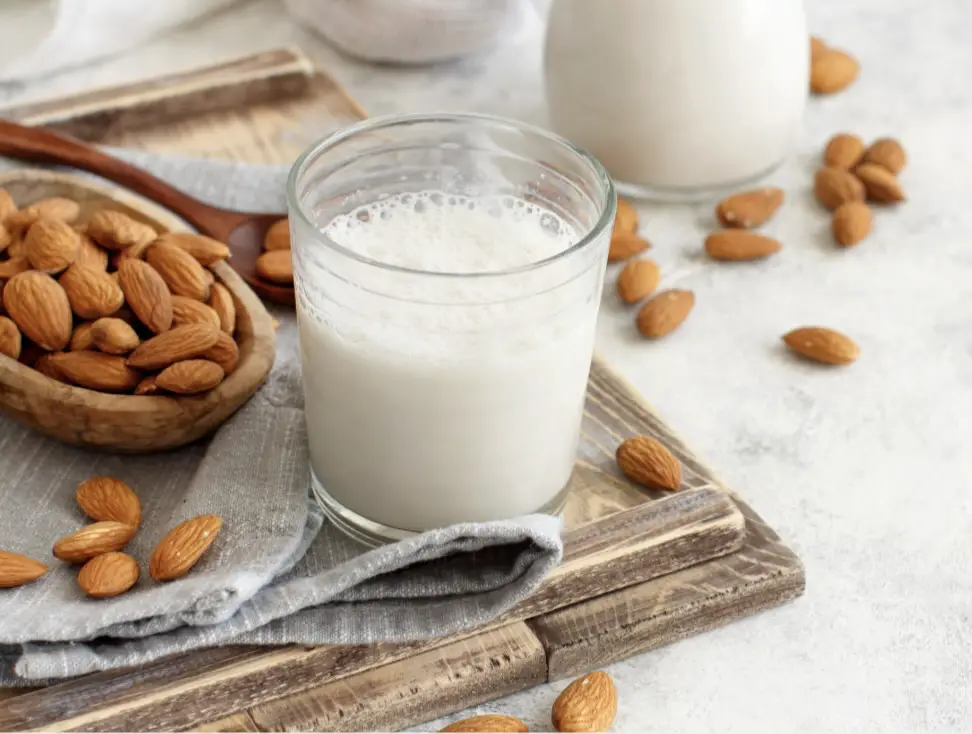
Choosing between oat and almond milk involves weighing various factors beyond personal taste preferences or dietary requirements. It’s about understanding the broader implications of our choices on the environment, animal populations, and health.
Both options offer unique benefits and can play a role in a balanced diet while supporting sustainable consumption habits. By making informed decisions based on comprehensive comparisons like these, we contribute to a more sustainable future with every glass of plant-based milk we choose.
At Reluctant Low Carb Life, we are staunch advocates of the Health Trifecta: Fullness, Fitness, and Freshness. Additionally, we embrace the pillars of health, wellness, and graceful aging. Our mission is to provide honest and precise information to individuals dedicated to adopting a healthy lifestyle while enhancing their fitness and well-being.
We have a free monthly newsletter that is filled with information and helps you remain updated. Subscribe to the Reluctant Low Carb Life newsletter by clicking here.
Listen to our weekly podcast, Reluctant Low Carb Life, on all the major podcast platforms by clicking here.
Follow us on Instagram and Facebook by clicking here.
Related Question
Is Almond Milk Considered A Dairy Product?
Almond milk is not considered a dairy product as it is technically a plant-based milk substitute. A dairy product is a product that comes from an animal, such as a dairy cow or even a goat. We recommend substituting unsweetened almond milk for dairy milk on a keto and low-carb diet.
You can read more about Is Almond Milk Considered A Dairy Product? by clicking here.
Do We Get Fat In Drinking Almond Milk?
Unsweetened almond milk should not make you fat. It is not only low in calories but also has no carbohydrates or low sugars. When compared to whole milk, unsweetened almond milk is a much better type of milk to drink. The sweetened version of almond milk is higher in calories, high in carbohydrates, and high in sugars.
You can read more about Do We Get Fat In Drinking Almond Milk? by clicking here.
Can I Use Real Milk To Substitute Almond Milk?
Real dairy milk and unsweetened almond milk can be interchangeable in most recipes, especially recipes for baked goods. The almond milk you are using may have more water than your natural dairy milk, so you may need to account for that in your baking time because the water may evaporate sooner, or the baking might be slower.
You can read more about Can I Use Real Milk To Substitute Almond Milk? by clicking here.
